- Winchester Public Schools
- Health Services
Student Services
Page Navigation
Treatment of Head Lice
Treatment options for head lice include over-the-counter (OTC) products purchased in a store or medications prescribed by a health care provider. These products are applied to the hair and scalp. Alternative treatments, such as herbal or home remedies, are available but are not regulated by the United States Food and Drug Administration in the way that medicines are. Whatever product you use, be sure to follow the directions carefully.
Over-the-counter (OTC) products – plant-based insecticides (pyrethins) and synthetic chemical insecticides (pyrethroids) – are popular choices. These products are available at pharmacies. Both types of OTC pediculicides are recommended for use by the American Academy of Pediatrics (AAP).
Prescription medications for the treatment of head lice include 3 pediculicides approved by the FDA since 2009 and 2 older products, which have been around for decades. Application times on the hair and scalp vary from several minutes to several hours. Treatment may be indicated for 1 time only or may need to be repeated a week or so after initial use.
Other treatment approaches - Home remedies include occlusive agents such as petroleum jelly, mayonnaise, and tub margarine, and “natural” products such as essential oils. Although widely used, these products are not approved by the FDA for the treatment of head lice and do not have to meet safety and efficacy standards comparable to those established for pharmaceutical products.
Manual removal of lice or nits, with or without a nit comb, is a lengthy and tedious process that is usually not completely effective at eliminating infestations alone or when done by someone other than a trained professional. However, manual removal is often mentioned as part of the treatment protocol in the product instructions for head lice pharmaceuticals. You may want to remove nits to improve appearance and to help in determining if treatment was effective.
You can help prevent your child from getting head lice by teaching them to avoid head-to-head contact with others, not to share clothing or personal items such as combs, brushes, or towels, and not to lie in beds, couches, pillows, carpets, car seats, or stuffed animals that have recently been in contact with someone with head lice.



